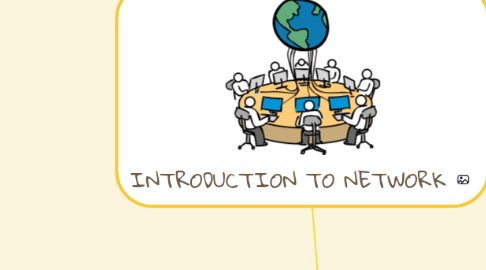
1. 1.3 Create LAN Using Networking Devices
1.1. Lan Connectivity Hardware
1.1.1. Router
1.1.2. Switch
1.1.3. Wireless Access Point
1.1.4. Bridge
1.1.5. NIC (Network Interface Card)
1.1.6. Mobile Base Station
1.2. Virtual Local Area Network (VLAN)
1.2.1. A network of computer that behaves as if they are connected to the same wire even though they may actually be physically located on different segments on a LAN
1.2.1.1. Advantages
1.2.1.1.1. Reduce cost
1.2.1.1.2. Broadcast control
1.2.1.1.3. Ease to administration
1.2.1.2. Disadvantages
1.2.1.2.1. Management is complex
1.2.1.2.2. Possible problems interoperability
1.2.1.2.3. Cannot forward traffic to another VLAN
1.3. Types Of NIC (Network Interface Card)
1.3.1. FireWire
1.3.2. PCMCIA adapter
1.3.3. On-Board NIC
1.3.4. USB Port
1.3.5. Wireless NIC
1.3.6. Compact Flash NIC
1.4. Data Transmission Mode
1.4.1. Simplex
1.4.2. Half-Duplex
1.4.3. Full-Duplex
2. 1.2 Principles of Communication in Networking
2.1. Data communication System Elements
2.1.1. Data Elements
2.1.1.1. Message
2.1.1.2. Sender
2.1.1.3. Receiver
2.1.1.4. Medium
2.1.1.5. Protocol
2.1.2. Communication Devices
2.1.2.1. Types of Communication
2.1.2.1.1. Wired Communication
2.1.2.1.2. Wireless Communication
2.1.3. Electronic Communication Methods
2.1.3.1. Instant messenger
2.1.3.2. Email
2.1.3.3. Fax
2.1.4. Transmission Media
2.1.4.1. Guided Media
2.1.4.1.1. Twisted-Pair Cable
2.1.4.1.2. Coaxial Cable
2.1.4.1.3. Fiber Optic Cable
2.1.4.2. Unguided Media (wireless)
2.1.4.2.1. RF Transmission
2.1.4.2.2. Infrared Transmission
3. Transmission Flaws
3.1. Noise
3.2. Attenuation
3.3. Latency
3.4. Radio frequency interference (RFI)
3.5. Electromagnetic interference (EMI)
3.6. Rgeneration
3.7. Repeater
4. Advantages of Comp. Network :
4.1. Data exchange
4.2. Data security
4.3. Backup
4.4. Entertainment
5. 1.1 Implement The Basic Concepts of Computer Networks
5.1. Types of network :
5.1.1. Peer to Peer (P2P)
5.1.2. Client Server
5.2. Category of Networks :
5.2.1. Local Area Network (LAN)
5.2.2. Wide Area Network (WAN)
5.2.3. Metropolitan Area Network (MAN)
5.3. Elements of Client Server :
5.3.1. Client
5.3.2. Server
5.3.3. NIC (Network Interface Card)
5.3.4. Network Operating System (NOS)
5.3.5. Backbone
5.3.6. Topology
5.3.6.1. Segment
5.3.7. Transmission Media
5.4. Topology
5.4.1. Bus
5.4.2. Ring
5.4.3. Star
5.4.4. Mesh
5.4.5. Tree
5.4.6. Hybrid
5.5. Fucntion of Hardware :
5.5.1. Switch
5.5.2. Bridge
5.5.3. Repeater
5.5.4. Router
5.5.5. Gateways

